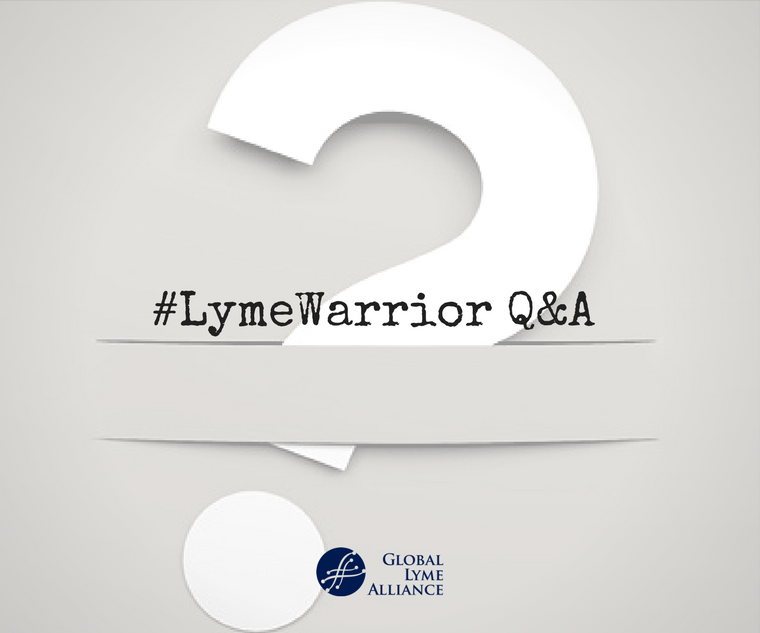
Every few months, Jennifer Crystal devotes a column to answering your questions. Below she answers some that she’s recently received. Do you have a question for Jennifer? If so, email her at lymewarriorjennifercrystal@gmail.com.
Were your moods always shifting with Lyme disease?
Lyme disease can cause anxiety and depression as well as other psychiatric issues, so certainly mood swings are not uncommon. In his book Lyme Disease: Medical Myopia and the Hidden Global Pandemic, psychiatrist Bernard Raxlen, M.D. describes patients who were “ordinarily upbeat, optimistic, outgoing, socially engaged and level-headed” experiencing a “personality shift” and becoming “irritable, disagreeable, withdrawn, antisocial and up-tight.” [i] Some Lyme disease patients feel that they become an entirely different person.
I generally kept my demeanor, but I certainly had mood swings much more easily than I did when I was healthy. I remember laughing in a buffet line with my sister, when suddenly I got cranky and snapped at her. “Whoa,” she said. “Why the sudden mood shift?” There could have been several explanations that probably were not mutually exclusive. It’s possible that my blood sugar dropped; one of my other tick-borne illnesses, babesiosis, causes hypoglycemia. I also may have run out of energy; the tank can fall to empty unexpectedly for Lyme patients, and when it does, there’s nothing left to give. The shift may also just have been indicative of the way tick-borne illnesses were affecting my brain.
Now that I am in remission, my moods are more stable, thanks to diminished infection in my body as well as medication for anxiety and depression. I get sad easily when I’m overtired, but that usually improves after a good night’s sleep. I do sometimes still get “Lyme rage”—going from 0 to 60 very quickly when something small goes wrong—but again, this happens almost exclusively when my tank is on empty. Getting appropriate rest, pacing myself, keeping my infections at bay, and utilizing talk therapy and medication all have helped me stabilize my moods.
You mentioned you also had Epstein-Barr virus in addition to tick-borne illnesses. How did you get it under control?
Epstein-Barr virus (EBV) is the virus that causes mononucleosis. People who have infectious mononucleosis keep Epstein-Barr antibodies forever, but for most, the infection becomes dormant. For those struggling with compromised immune systems or other infections, however, Epstein Barr virus can either remain active after mononucleosis or get reactivated during times of stress. As I explain in my “Reactivated Infections: A Possible Piece of the Chronic Illness Puzzle” post, my own case of mono slipped into chronic active Epstein-Barr virus, leaving me bedridden for two years, because I didn’t realize my body was wrestling underlying tick-borne infections.
Many Lyme disease patients have high Epstein Barr titers for similar reasons—their immune systems are too overtaxed to adequately fight both tick-borne illness and EBV. Researchers are also newly discovering how EBV can actually cause other diseases, such as a recently discovered link between EBV and Multiple Sclerosis (MS).
No matter how Lyme disease and EBV are related, patients just want to relieve suffering from both. For me, this relief was concurrent. Once I adequately treated my tick-borne illnesses, my fatigue—caused by both the tick-borne illnesses and EBV—got much better.
In addition to antibiotics, anti-inflammatories, and anti-malarials for my tick-borne illnesses, my doctor also put me on a number of vitamins and supplements to help boost my immune system. These included Transfer Factors. It’s important to remember that what works for one patient might not work for another. There is no set protocol for treating tick-borne illness or EBV. Your LLMD, and perhaps your PCP, need to look at biomarkers to see how your immune system is functioning overall, what nutrients you might be missing, and what you may need to reduce your viral and bacterial loads.
Adjunct therapies like integrative manual therapy and neurofeedback helped with the impacts of all of my illnesses. Most importantly, EBV required rest, rest, and more rest. And as I also note in my “Reactivated Infections: A Possible Piece of the Chronic Illness Puzzle” post, my EBV is in remission, but it can flare up if I’m not careful. Talk to your doctors to see how you can get your own EBV under control.
When you had aches and pains with Lyme disease, did they extend into your quads? How about into your calves? Did the pain move around?
Yes! Something that sets Lyme disease pain apart from the pain of, say Rheumatoid Arthritis, is that it is migratory. You might feel it in your left elbow one day, and your right knee the next. Lyme is an inflammatory disease, and inflammation can happen anywhere in the body. You can feel pain in your joints as well as your muscles and bones. If you are experiencing this type of moving pain and have not yet seen a Lyme Literate Medical Doctor (LLMD) to determine if the pain might be caused by tick-borne illness, I encourage you to do so!
[i] Raxlen, Bernard, M.D. with Cashel, Allie. Lyme Disease: Medical Myopia and the Hidden Global Pandemic. London: Hammersmith Health Books, 2019 (21).
The above material is provided for information purposes only. The material (a) is not nor should be considered, or used as a substitute for, medical advice, diagnosis, or treatment, nor (b) does it necessarily represent endorsement by or an official position of Global Lyme Alliance, Inc. or any of its directors, officers, advisors or volunteers. Advice on the testing, treatment or care of an individual patient should be obtained through consultation with a physician who has examined that patient or is familiar with that patient’s medical history.
Related Blogs:
You're Not Crazy...You Have Lyme
The Aches and Pains of Tick-Borne Illness
To read more blogs, click here.

Jennifer Crystal
Writer
Opinions expressed by contributors are their own. Jennifer Crystal is a writer and educator in Boston. Her work has appeared in local and national publications including Harvard Health Publishing and The Boston Globe. As a GLA columnist for over six years, her work on GLA.org has received mention in publications such as The New Yorker, weatherchannel.com, CQ Researcher, and ProHealth.com. Jennifer is a patient advocate who has dealt with chronic illness, including Lyme and other tick-borne infections. Her memoir, One Tick Stopped the Clock, was published by Legacy Book Press in 2024. Ten percent of proceeds from the book will go to Global Lyme Alliance. Contact her via email below.



-1.jpg)


